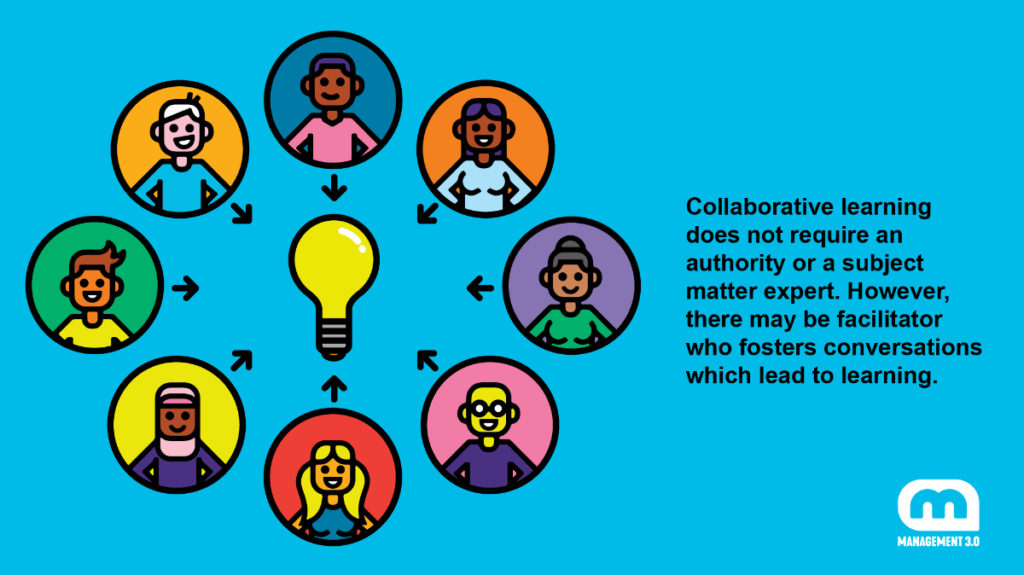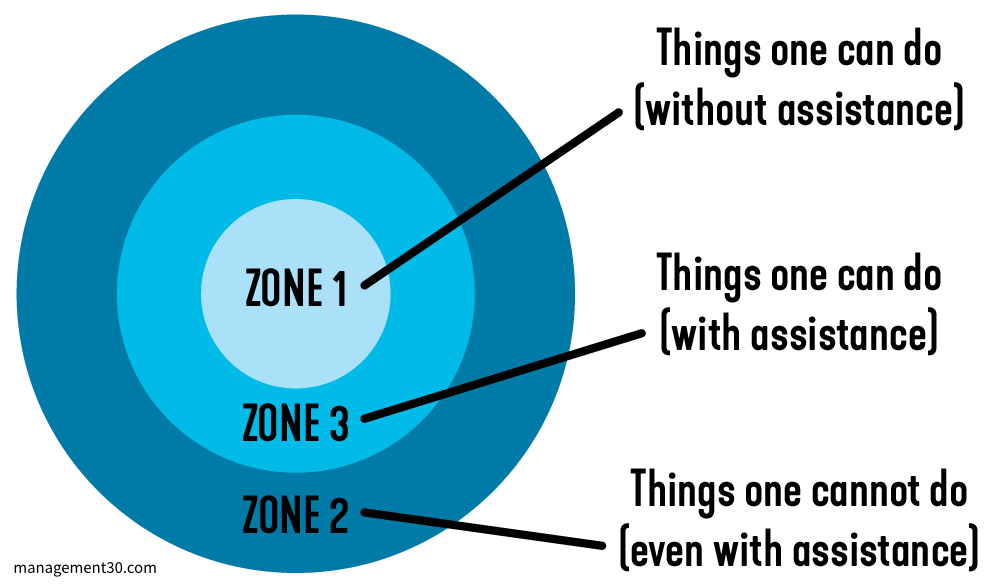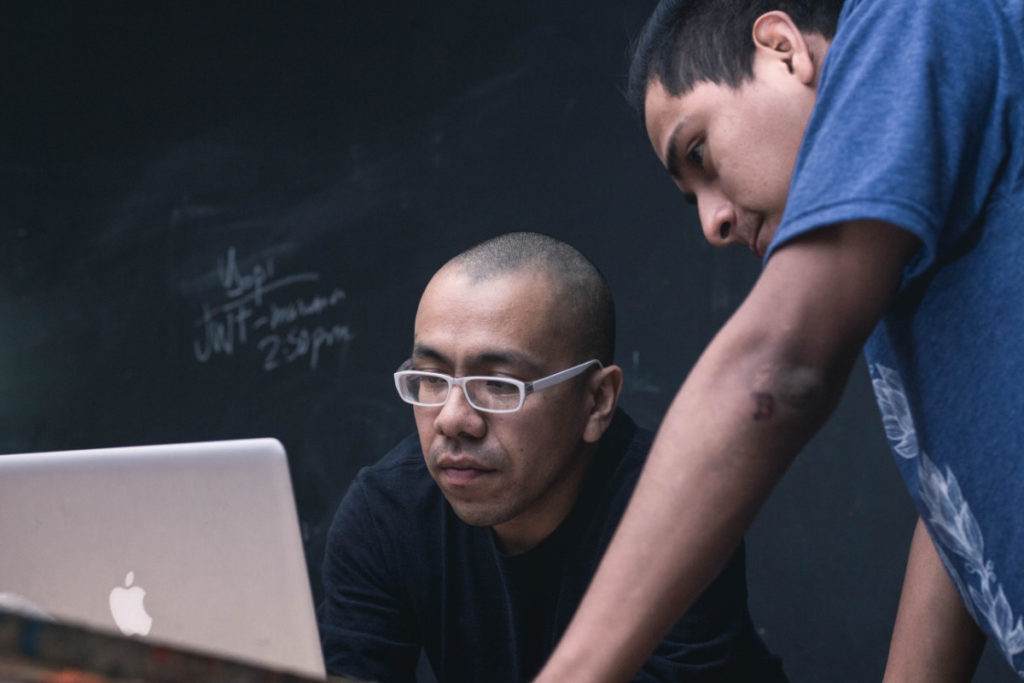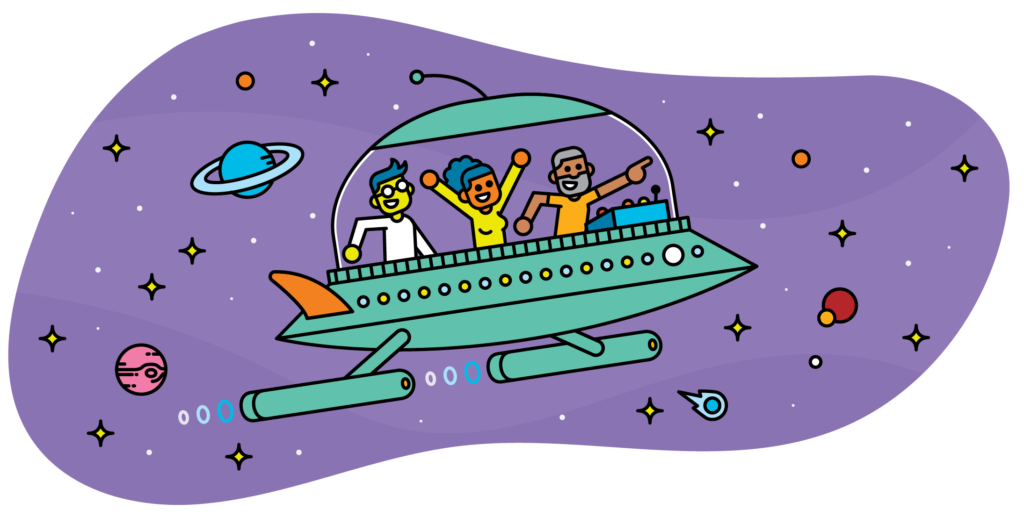By Vivek Ganesan, Management 3.0 Facilitator, agilist and book author from India. He also established Tech Coach Circle, a community that helps to add tech-savviness to the professional profile of its members. In this article he shares what this community taught him about Collaborative Learning.
Quick links:
A must read for Change Managers and Agile Coaches and everyone who is into learning and growth!
The Curious Case of A Saturday Morning
It was a Saturday morning – an unusual time to be spending on a Google Meet workshop. Yet, I was in that virtual workshop as a backup facilitator.
The workshop was not work-related. It was a ‘happy hour’ organized by a learning community, where people from multiple organizations participated.
After the initial excitement of the ‘hi’ and ‘hello’ messages, the designated volunteer shared his screen. The activity of the day was ‘Learn by Guessing’.
“I will now show you some pictures and you have to guess the tech jargon from them, just like a Pictionary”, he added.
The next 40 minutes witnessed a flurry of activity amidst laughter and celebrations while the volunteer calmly did the following things, in the below order, with great precision.
- Show pictures
- Ask the group to guess which tech jargon they represent
- Engage the group in conversation as they guess, allowing them to laugh, sometimes by playful teasing
- Reveal the answer – in this case, the tech jargon that the pictures represent
- Most importantly, de-jargonize that tech jargon using layperson terms
- Invite the group to share their comments or alternate explanations
- Move to the next word. Rinse & Repeat
The group dispersed at the end of the hour, thanking each other for contributing to their learning.
What is interesting about this?
You may ask, “What is interesting about this, Vivek?”
A handful of people (tech managers and coaches, to be specific) found it awesome to spend a full hour on a Saturday morning learning about tech jargon by playing children’s games. These people have full-time jobs. Almost all of them have a family too. Why do they join this meeting every single time, not missing one? This is what interests me.
One more thing interests me. A few people in this community joined it because their managers recommended it. Why would managers do that?
The answer to these questions is what experts call Collaborative Learning. Let us explore this topic in detail in this article.
What is Collaborative Learning?
Collaborative learning is a type of social learning where a group learns something by collaborating on an activity.
There may be a facilitator in this but not a teacher. In other words, there is no necessity for a central authority who knows everything about the topic. The role of the facilitator is to create room for conversations and thereby, room for learning.

Why are organizations recommending these experiences to employees?
To answer this question, we need to take a diversion from our current journey. Due to diversion, the next stop in our journey is the Zone of Proximal Development.
Sounds jargoney? Let’s de-jargonize it 🙂
There was a Soviet psychologist named Lev Vygotsky. He created a model of how children can learn. Before his work, the world recognized two zones where one could place tasks.
- Zone 1 – Tasks that one can do (without any assistance)
- Zone 2 – Tasks that one cannot do (even with assistance)

Lev introduced the third middle zone in the list named Zone 3 – Tasks that one can do (only with assistance). He called it the Zone of Proximal Development.

His idea was that learners could expand their Zone 1 by engaging in their Zone 3 activities with more knowledgeable others.
Today’s successful leaders realize that the same zones apply not only to people but also to organizations. So, they encourage their employees to participate in collaborative learning outside the organization. This way, their employees will expand their Zone 1, effectively expanding the organization’s Zone 1.
Also read: What is Collaborative Leadership?
Terms similar to Collaborative Learning
How is Collaborative Learning different from Active Learning?
The students don’t participate actively in the learning process in a regular classroom setup. The teacher does a lecture and the student is a passive listener. This is passive learning.
Any learning where the student does something active, besides passively listening, is called active learning. Active learning is just the opposite of passive learning.
So, collaborative learning is a type of active learning. However, it is more specific in saying what kind of activity is needed. Collaborative learning is active learning where the activity is doing a task in collaboration with one or more people.
How is Collaborative Learning different from Experiential Learning?
Experiential learning is also defined as ‘learning by doing and reflecting’. In experiential learning, the students do hands-on tasks and reflect on the process and/or the output produced. These tasks may be real-life tasks or mimic real-life ones.
Our topic of this article, collaborative learning, may or may not be experiential learning. You could learn collaboratively with someone else, either hands-on or hands-off. Also, experiential learning can be done solo.
Hence, not all experiential learning is collaborative and vice-versa.
Is Collaborative Learning and Cooperative Learning the same?
Cooperative learning happens when you assign roles beforehand and define who will do what. These roles will collaborate with each other interdependently and contribute to group learning. Think of this similar to a music orchestra.
Thus, cooperative learning is a type of collaborative learning with predefined work distribution and interdependent roles.
› Have you heard of Mindful Learning?
Management 3.0 has a learning community as well. The Management 3.0 Community is a safe space to learn and practice with others. Get support to apply your learnings to your leadership challenges, share your experience and learn from others.
› Yes, I want more details
Collaborative Learning in Workshops
The first time I experienced collaborative learning was during my Management 3.0 2-day workshop facilitated by Sarika Kharbanda. In these two days, I learned more about learning and teaching than about Management 3.0.
Later, I came to know that all Management 3.0 workshops are run as collaborative learning exercises. This was a big motivator for me to become a licensed Management 3.0 Facilitator.
Since then, I have always strived to create collaborative learning and have attempted to do so as a volunteer at Tech Coach Circle. If you are curious, yes, this was the community that meets on Saturday mornings 🤓 (and that excellent facilitator who ran the session that day was Guru Thimmapuram 🙏)
How else can we experience Collaborative Learning?
In addition to Management 3.0 workshops (that I strongly recommend you to attend), you can experience collaborative learning in the following ways. Note that this is not an exhaustive list.
- Delegation Poker – A Management 3.0 practice where a team comes together and discusses the levels of delegation.
- Celebration Grid – A Management 3.0 practice where the entire team comes together and shares their successes, failures and learnings. The goal here is to create a learning organization.
- Pair Programming – A pair implements a piece of functionality, ideally, along with tests.
- Mob Programming – A group of people implements a functionality by shouting out the changes aloud, while only one person in the room has the keyboard.
- Lean coffee events – Each person brings their topic of interest. The group votes and schedules the top topics for discussion in specified time slots.
- Open Space Agility events – Participants themselves create and manage the agenda for meetings, seminars, or conferences.
- 3-Amigos Sessions – A core practice in Behavior Driven Development (BDD) where three people write down scenarios against a user story by asking ‘what if’ questions repeatedly.
- Moving a user story from ‘To do’ to ‘Done’ – Scrum? Kanban? Or Scrumban?
- And, my favorite – Learning Communities
- Slack communities
- Revgenius for sales professionals
- Tech Coach Circle
- Meetup communities

Conclusion
No matter if you are working in a startup or an enterprise, ensuring that there are avenues for collaborative learning for your employees is key. Due to the interactive and community aspect of collaborative learning, employees are more engaged. This increases their motivation to learn too.
Collaborative learning not only increases the skill level of the employees but also moves your organization to the next level. In short, collaborative learning could be the jetpack that your organization needs to be competitive in today’s times.
Header Photo by Van Tay Media on Unsplash


